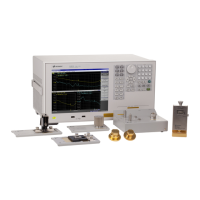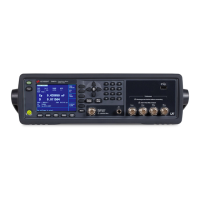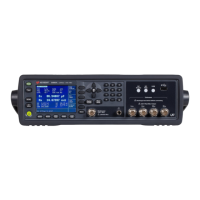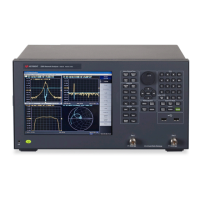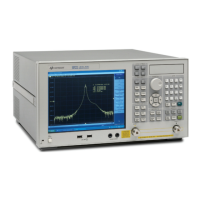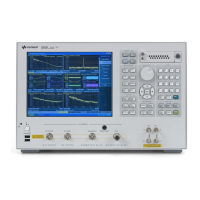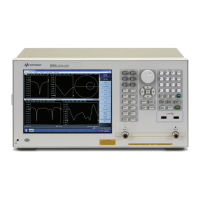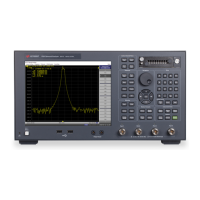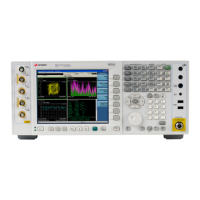34 Impedance Analyzer
1 Troubleshooting
Function Specific Troubleshooting
If the E4990A exhibits a failure symptom that is related to a specific
function or control such as a front panel key control, data storage,
remote control interface, external trigger, external keyboard or
mouse, isolate the trouble using the Function Specific
Troubleshooting procedures described below. The major functions
of the E4990A and the troubleshooting procedure for each function
are shown in Table 1.
Table 1 Major functions and troubleshooting procedures
Function Description Troubleshooting
Front panel keys All E4990A functions can be set and controlled
via the front panel keys.
Refer to “To Check the Front
Panel" on page 35
Touch panel The touch screen display on the E4990A allows
all functions in the menu bars, setup windows
and dialog boxes to be set by a touch to the
screen panel.
Refer to “To Check the Touch
Panel" on page 35
LCD display Almost all the information including the
measurement value, setup state, result data
processing, menu bar, softkey label and others
are indicated on the 10.4-inch color LCD
display.
Refer to “To Check the LCD" on
page 36
External keyboard The external keyboard can be used for the entry
of numerical and character data when it is
connected to the USB connector on the front or
rear panel.
Refer to “To Check the External
Keyboard" on page 36
Mouse The mouse can be used to move the pointer on
the LCD display, select functions and change
settings, when it is connected to the USB
connected on the front or rear panel.
Refer to “To Check the
Mouse" on page 36
External monitor An external color monitor can be used to display
the same information as the E4990A LCD
display, when it is connected to the External
Monitor Output Port (15-pin VGA connector) on
the rear panel.
Refer to “To Check the External
Monitor Output Port" on
page 37
GPIB Interface The GPIB compatibility allows the E4990A to be
operated as a talker/listener on IEEE 488
interface bus.
Refer to “To Check the
GPIB" on page 37
Handler Interface The Handler Interface port can be used to
transfer comparator decision output data and
perform timing synchronization with an external
handler.
Refer to “To execute the
diagnostic test" on page 32
and “To execute the diagnostic
test" on page 32
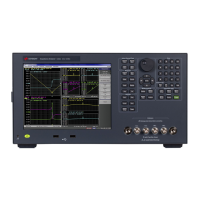
